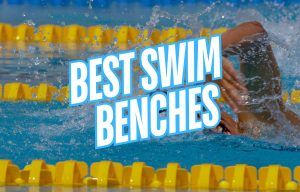
The Best Swim Benches for Stronger and Faster Swimming
Swim benches are an excellent way to build superhero swim strength and improve technique. Here’s a hands-on review of the best swim benches for faster swimming.
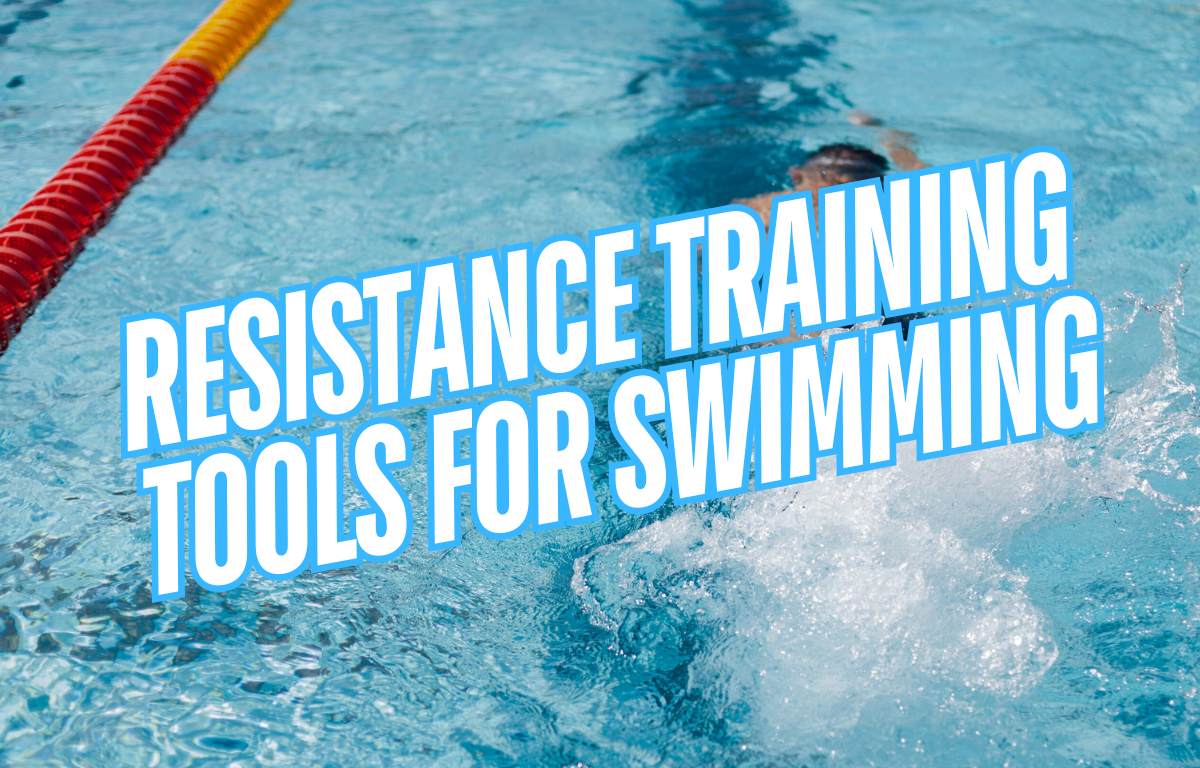
Looking to level up your strength and power in the water? Here are the best in-water resistance training tools for faster and more explosive swimming.
Swimmers are always on the prowl for ways to improve performance in the water. And this includes using different types of equipment, from swim snorkels to your standard pull-buoy and kickboard.
Various forms of resistance equipment designed for swimmers are another such tool for improved swimming.
Accessories like a drag chute, DragSox, resistance tubing, and others all help swimmers build strength and power in the water.
They can also be used to improve specific technical skills, like a stronger early vertical forearm.
And of course, when used properly, in-water resistance equipment increases swim speed, leading to faster times on the clock.
Here are the most common types of in-water resistance equipment to help swimmers turn up their performance in the water.
The best types of resistance training tools to use for swimmers include:
Next, we’ll take a closer look at each, including pros and cons and our favorite option for swimmers and coaches ready to get started with getting stronger.
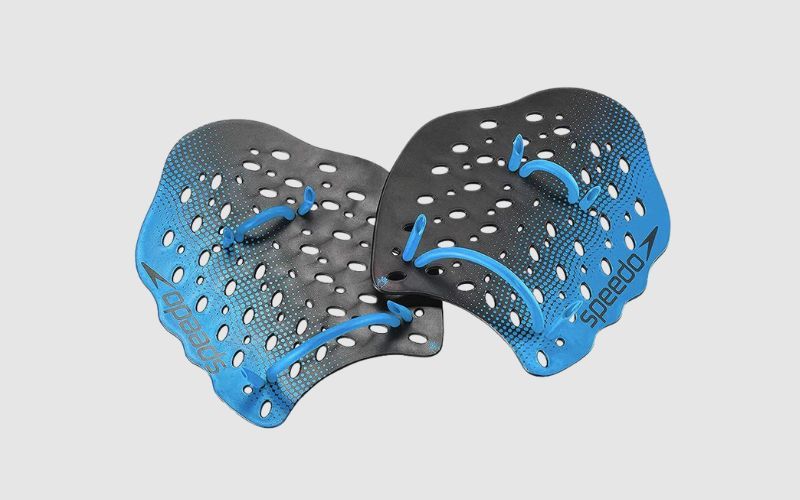
Swim paddles are one of the classic strength building aids for swimmers. The concept is simple: strap on a pair of dinner plates to your hands to increase the surface area, and by extension, pull more water and build more swim-specific strength.
Paddles can be used on their own, with a pull buoy, with swim fins for hyper-velocity swimming, or in tandem with other strength-developing tools like tubing, chutes, and power towers.
The right swim paddles are sized appropriately (aim for a paddle size that is about 20% larger than your hand when fully relaxed on a flat surface) and have the options of removing the straps to promote cleaner hand entry and constant pressure during the pull.
The main downside with paddles, and other surface-increasing swim equipment, is that overuse can change your stroke mechanics, making your “naked” stroke feel weird once taking the paddles off. A study with experienced swimmers (perhaps unsurprisingly) found that paddle use increased distance per stroke (Crocker et al., 2021).
Like every type of swim equipment and aid, make sure that it’s promoting the goals you have for regular swimming.
✅ Pros:
❌ Cons:
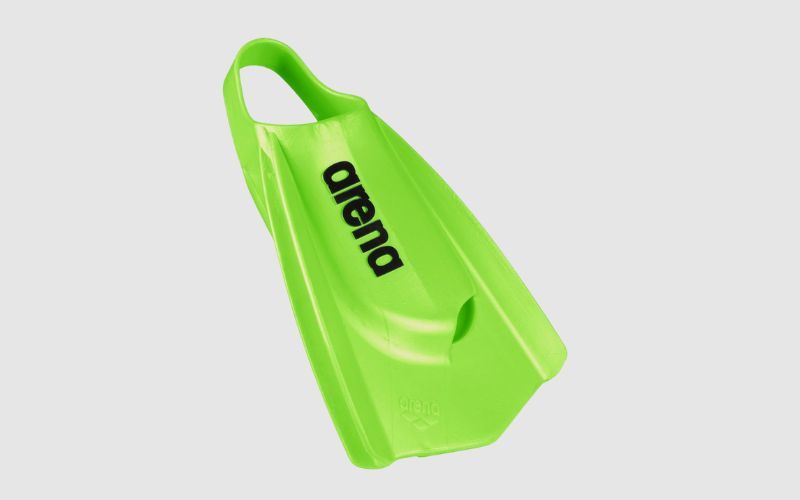
Swim training fins, either long or short blade, are like paddles for your feet, increasing the surface area, allowing for greater propulsion when kicking.
Training fins, unlike those designed for snorkeling and scuba, are made of soft rubber or preferably silicone, have ribbed edges to “catch” more water when kicking, and open heels to encourage full range of motion.
The added surface area on fins promote more muscle activity in the lower body, more specifically, the same ones you use when swimming without fins. In this sense, swim fins are a great tool for developing power and speed with short-burst, maximal effort repetitions in the water.
Fins are also great for every level of swimmer, from beginners looking to master the range of motion required of an effective kick to more experienced swimmers looking to get stronger in the water.
Like paddles, however, swimming with fins does slightly change your stroke mechanics. You’ll notice that the increased power and acceleration from your legs results in a longer hand entry at the top of the stroke, lowering stroke rate.
See also: How Do Swim Fins and Paddles Change Technique?
That said, fins are wildly versatile and can be used to strengthen your underwaters, freestyle kicking, fish kicking, and so on.
While most swimmers use individual fins for training, those looking to level up their underwater dolphin kick should consider training with a Monofin.
✅ Pros
❌ Cons
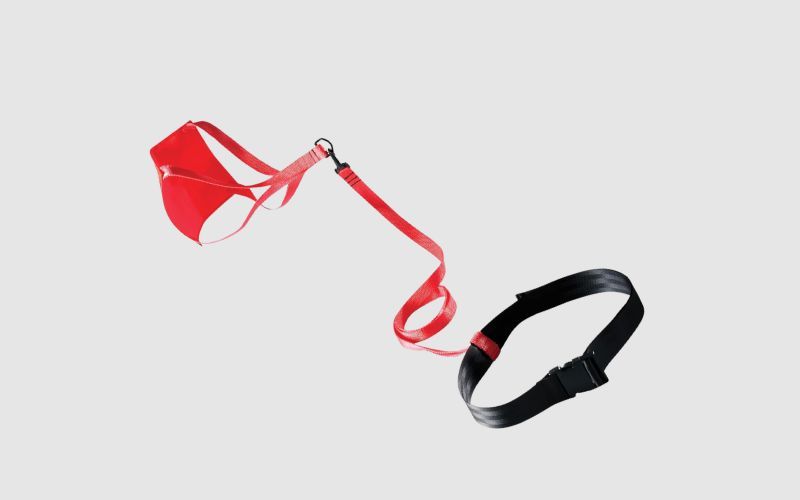
Swim parachutes, also known as drag chutes, are small nylon chutes that attach to a swimmer via a strap and belt. It dangles several feet behind the toes, “catching” extra water and creating added resistance.
When fully open, they create lots of drag, pushing swimmers to increase effort and muscle activation in the key parts of the swim stroke.
Parachutes are an excellent option for people new to resistance training in the water. They are easy to store and transport in your swim bag and don’t need a big set up (like power towers).
A study published in the Journal of Sports Biomechanics titled “The influence of an 11-week resisted swim training program on the inter-arm coordination in front crawl swimmers,” showed that adding short repetitions of all-out efforts with a parachute on improved swim velocity, stroke rate, and increased propulsive continuity in experienced swimmers.
Swim parachutes are also very inexpensive and can be sized according to your ability and goals. They are also highly portable and generate excellent transfer and specificity.
The best swim parachute on the market is the FINIS Swim Chute (below) thanks to multiple size options, excellent durability, and adjustable belt for a secure fit.
✅ Pros:
❌ Cons:
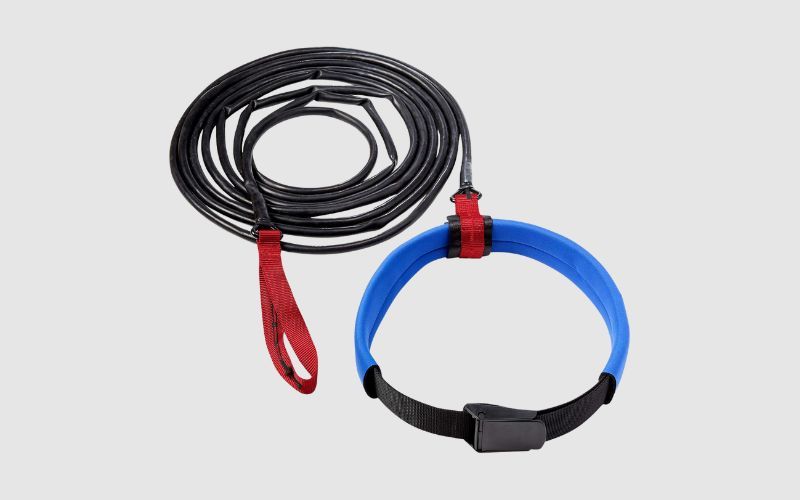
Resistance cords, also known as resistance tubing, swim tethers, or StretchCordz, are elastic bands that are anchored to a pool ladder, starting block and attached to a belt that is fastened to a swimmer’s waist.
Swimmers then push off, gradually increasing the amount of resistance being experienced until they can no longer move forward. Resistance tubing comes in a variety of lengths, with some of them long enough that experienced swimmers can power their way across a 25m pool.
Resistance cords can also be used for overspeed work. Once you swim to the point where you can no longer overcome the tension in the cord, turn around and let the cord pull you back to the wall at hyper speeds.
Researchers at a university in Japan (Sengoku et al., 2020) took a group of national and international level swimmers and had them do a simple intervention of 200m dolphin kicking plus 4×5 underwater dolphin kicks attached to resistance cords.
The result?
At the end of the four months, the swimmers significantly increased dolphin kicking speed and kicking frequency (without widening the amplitude of the kicking motion).
Unlike other resistance tools, cords allow you to see progress. For example, week one, you are able to swim out to 15m against the cord. Week four, your fingertips are grazing the wall at 25m, giving you real-time feedback of improvement.
Resistance cords do require more space in the lane and pool, and it must be anchored firmly to something stationary to generate sufficient tension for swimmers to develop strength.
Having used these types of swim resistance aids a lot over the years, I’d be lying if I said that I hadn’t seen one or two of these cords snap, sending swimmers on the pool deck scurrying for cover.
✅ Pros
❌ Cons
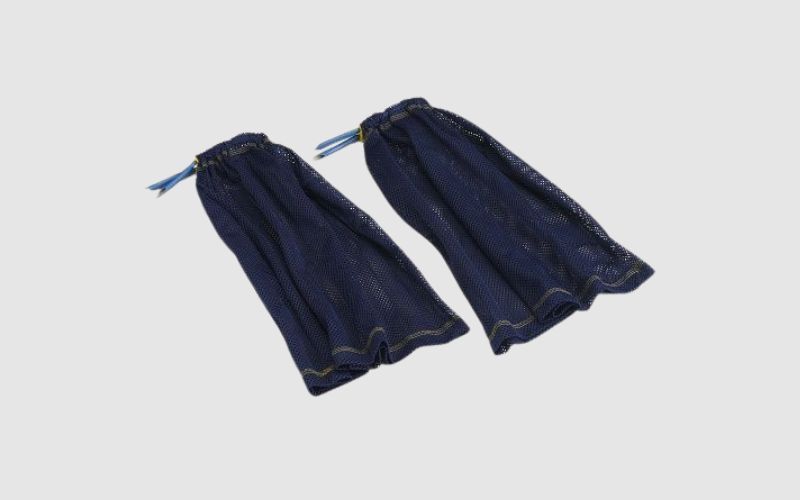
DragSox are mesh nets that are worn over the feet, increasing drag by soaking up water and creating an area of low pressure behind the feet. Swimmers have to kick harder to overcome the suctions effects, encouraging higher kick frequency under resistance.
DragSox, made by specialty swim gear company AquaVolo, are the best type of resistance tool for helping swimmers develop a stronger kick. They can be used on a kickboard, when swimming, or performing vertical kicking.
This tool is awesome as it can be used in nearly any scenario, the mini nets are very portable and easy to store, and you can use them in a lane teeming with other swimmers.
DragSox are available in several different sizes (or resistance levels). The higher resistance DragSox are large and provide a humbling amount of drag.
✅ Pros
❌ Cons
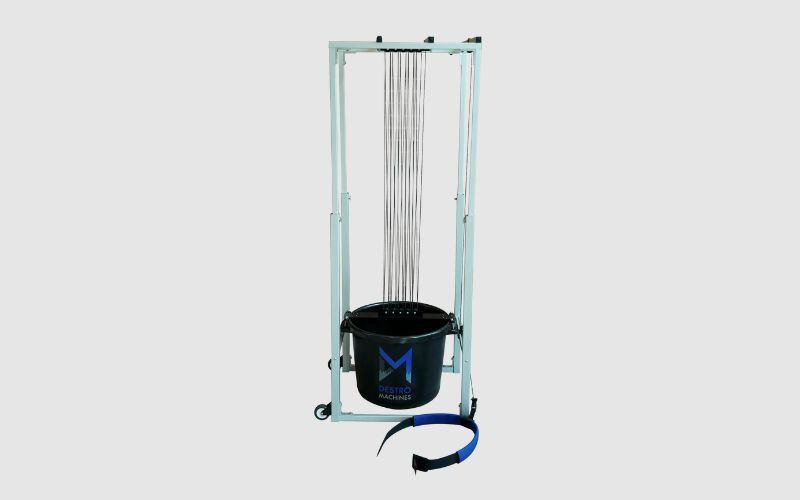
Power towers are heavy-duty resistance training devices that use weights and pulleys to create adjustable resistance through a cord and belt that is attached to swimmers.
Power towers use weight plates or buckets with water to quickly adjust resistance levels. As swimmers get stronger and exert more force and swim further out, plates or water are added to keep swimmers improving.
This type of device is obviously pricy, with some units retailing for well over $1,000 and they take up a lot of room on the pool deck, limiting use for solo swimmers who train during lap hour swims or don’t train with a team.
But power towers are the best tool for developing peak force and strength in the most swim-specific manner possible.
Weight can be added to match a swimmer’s strength and ability, body position is not compromised by straps or cords, and it can be used for swimming, kicking, underwaters, or pulling.
✅ Pros
❌ Cons
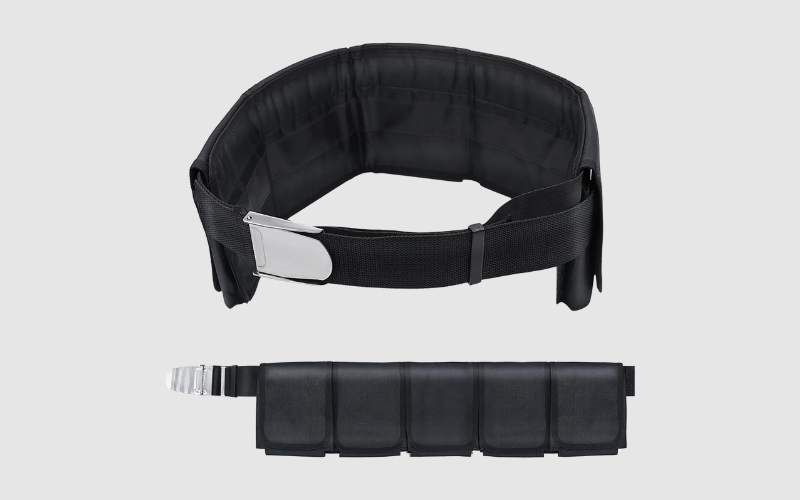
Weight belts—no, not the leather belt you see used in the weight room, but the type of belt used for scuba diving and spearfishing—use steel pellets to increase the weight around the waist of a swimmer.
Once you’ve loaded it up with the desired weight and clipped it securely around your waist, either push off and swim for short, high-intensity sprints or use it to perform rounds of vertical kicking.
To overcome the pull of the weight on the belt, swimmers need to maintain excellent body position in the water to avoid sagging in the water and creating excess drag. And when doing vertical kicking, swimmers need to kick hard to keep their faces out of the water (literally sink or swim, as it were).
Michael Phelps, the greatest Olympian and best swimmer of all time, used a weight belt to add resistance to vertical kicking sets to power up his underwater dolphin kick.
Below is a video of Phelps doing weighted vertical dolphin kicking under the supervision of his longtime coach, Bob Bowman, when they were training out of Ann Arbor, Michigan:
I’ve tried several different types of weight belts over the years, and while I like the enhanced body position that comes from high-intensity swimming with one, the belt sliding around when swimming can be annoying.
Weight belts aren’t as common compared to other resistance tools, and when they are, it’s with very experienced swimmers due to the inherent safety factors involved.
The obvious but obviously not-always-obvious disclaimer: Like any type of resistance training, always use tools like weight belts under supervision and start lightly and progressively add weight.
✅ Pros
❌ Cons
Incorporating resistance equipment into your swim training can provide significant benefits for competitive swimmers looking to enhance performance.
Tools such as swim parachutes, resistance cords, drag socks, power towers, weight belts, and swim fins offer diverse ways to build strength, improve technique, increase speed, and boost endurance.
Choose the resistance tool that matches your goals, budget, and space availability at the pool and get to work getting stronger in the pool!

Olivier Poirier-Leroy Olivier Poirier-Leroy is the founder of YourSwimLog.com. He is an author, former national level swimmer, two-time Olympic Trials qualifier, and swim coach.
✅ Free shipping on Orders over $49
✅ Price Match Guarantee
✅ Best selection of gear for training and competition
✅ Fast and Easy Returns
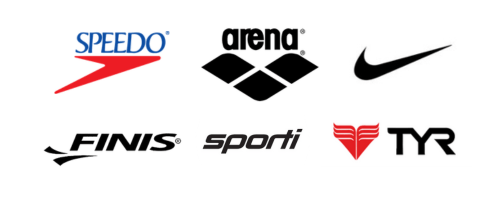
“This is the best book I have ever seen concerning mental training.” — Ray Benecki, Head Coach, The FISH Swim Team


Swim benches are an excellent way to build superhero swim strength and improve technique. Here’s a hands-on review of the best swim benches for faster swimming.
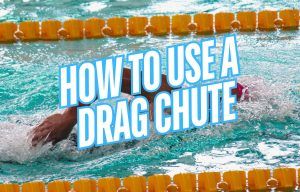
Looking for tips on how to use a drag chute for improved swim performances? Read on for some proven tips, sets, and pointers for training with a chute.

Ready to take your swimming to the next level? Here are seven ways that a drag chute can help you become a better and faster swimmer.
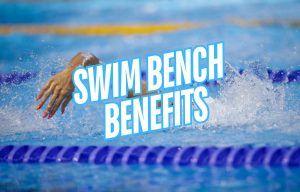
Wondering if a swim bench can help improve your swimming? Here are six benefits of swim benches for better technique, more power, and faster swimming.
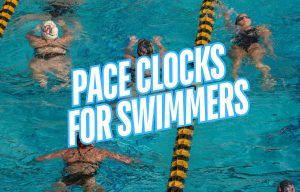
Pace clocks are an indispensable tool for accurate and focused swim training. Here is a look at the best pace clocks for every kind of swimmer and swim team.
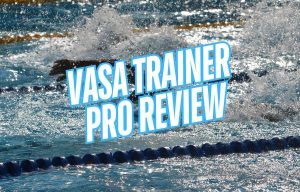
Wondering if the VASA Trainer Pro is the right addition to your dryland training? Here is a hands-on review and how it can help you swim faster in the pool.